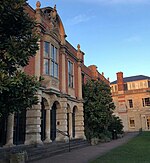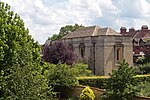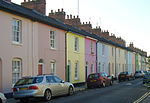Blavatnik School of Government
2010 establishments in EnglandBuildings and structures completed in 2015Departments of the University of OxfordEducational institutions established in 2010Herzog & de Meuron buildings ... and 1 more
Public policy schools

The Blavatnik School of Government is a school of public policy founded in 2010 at the University of Oxford in England. The School was founded following a £75 million donation from a business magnate Len Blavatnik, supported by £26 million from the University of Oxford. It is part of Oxford's Social Sciences Division, which aims to train current and future leaders in the practice of government.
Excerpt from the Wikipedia article Blavatnik School of Government (License: CC BY-SA 3.0, Authors, Images).Blavatnik School of Government
Walton Street, Oxford Jericho
Geographical coordinates (GPS) Address Nearby Places Show on map
Geographical coordinates (GPS)
| Latitude | Longitude |
|---|---|
| N 51.7594 ° | E -1.2646 ° |
Address
Radcliffe Observatory Quarter
Walton Street
OX2 6NW Oxford, Jericho
England, United Kingdom
Open on Google Maps










